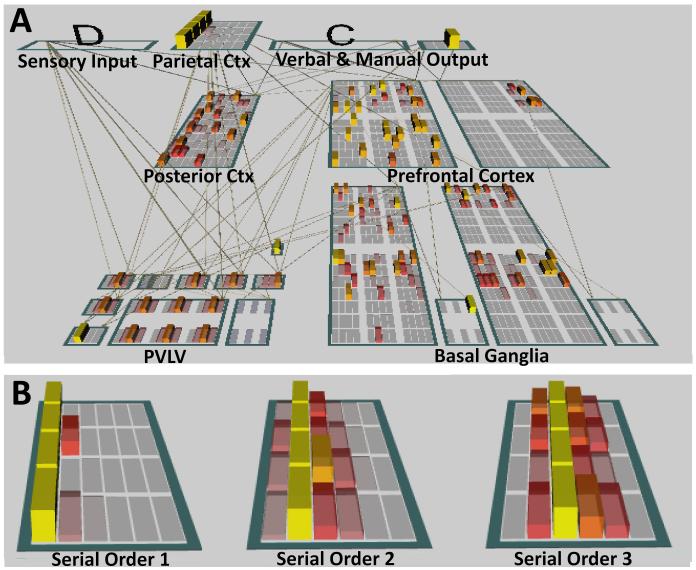Figure 2.
A. The PBWM architecture includes units based on the prefrontal cortex and basal ganglia, including ventral and dorsal striatum, grouped into “stripes” (the visible subgroups within prefrontal and striatal layers). Input is provided to the model about the identity of the current stimulus and its serial order; the model is required to produce a manual output about whether the current stimulus matches that presented n trials previously, and a verbal output corresponding to the identity of the stimulus presented n trials previously. B. The parietal layers represent the serial order of successive trials in terms of n, using a graded and compressive code based on the mean and variance observed in the tuning curves of rank order sensitive neurons in the horizontal segment of the intraparietal sulcus.

